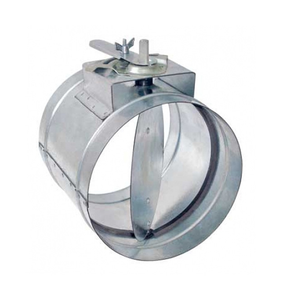5 Tips for Avoiding Home Moisture Problems
- Jen Stout

- Jul 23, 2019
- 5 min read
Water is essential to life. From taking showers to doing dishes to watering the yard, we all need water to live. A large part of home construction revolves around the functionality of water and adequate waterproofing. Think leak-proof roof, moisture controlling HVAC system, optimal drainage and plenty of running water.
Here’s some healthy home tips for managing water systems in your house.

1. Build with Adequate Waterproofing
First rule of thumb, the less holes in your roof, the better. Route HVAC and laundry exhaust vents and air supplies to the side of a home rather than out the roof.
Opting for a direct vent fireplace means you can skip the chimney all together – a bonus for keeping water and critters out and the heat in.
There are several very effective exterior waterproofing systems on the market. Whether you’re using the newer Zip System sheathing or standard Tyvek over plywood, keep in mind that moisture and vapor barriers are essential to waterproofing a home.
Proper door and window flashing are absolutely essential to ensuring your home is dry, leak-free and draft-free.
Showers are another area that require attention when it comes to waterproofing. Nontoxic waterproof cement backer board is readily available as well as shower waterproofing kits that should be installed from floor to ceiling and across the top of the shower. Not only does a tile surround in a shower look beautiful, but porcelain tile is also one of the best waterproofing barriers in any wet location.
2. Ventilation is Key
Modern day local building codes necessitate contractors to adhere to specific building energy code standards. Builders often are required to build a home that is so airtight that only a few pin holes of air are allowed to escape the home during a positive air pressure test.

HVAC manufacturers have also been pressed to cut back on energy consumption which has resulted in HVAC units that cycle a limited number of times per hour. While this is great for conserving energy, the lack of circulation causes moisture vapor to build up inside the home.
ERV and HRV systems help to keep clean air circulating throughout the home.
It’s always a good idea to install HEPA filters and UV lights on each HVAC unit to purify exterior air as it enters the home.
If you live in a humid climate (exterior humidity is 50 percent or greater), it’s a good idea to install a humidistat that is tied to a whole home dehumidification system.
Furthermore, installing a damper on your HVAC system allows manual control of how much exterior air enters the home. This way if your neighbors are burning logs next door or if the pollen count is high, you have the ability to adjust your exterior air intake.
Ventilating bathrooms and the laundry room are also critical for maintaining proper moisture control. Moisture sensing exhaust fans are also a good option to ensure humidity levels don’t reach higher levels in bathroom and laundry areas.
3. Use Moisture Resistant Finishes

Porcelain tile is one of your best bets for waterproofing showers. Using an integrated nontoxic grout sealer mixed into the grout mix will further ensure the space will remain waterproof for a long time.
Easy to clean, non-porous floors and surfaces are ideal. This means staying away from carpet, drapes and tapestries. Opt for tile, quartz, stone, non-toxic vinyl and sealed woods.
Wallpaper is in style and can add a lot of pop to a room. However, wallpaper tends to trap moisture and can serve as an excellent substrate for mold growth. Skip the wall paper and go for stone accents or a fun and funky painted accent wall.
4. Keep a Clean Living Environment
You may wonder how keeping a clean home can impact moisture. In fact, dust and dirt build up around baseboards, on fan blades, under beds and hiding between tiles and wood floorboards contain large amounts of allergens and mold spores.
A bathroom with a dusty corner that continues to get wet will eventually turn into a not-so-appealing mold problem.
Put some elbow grease into cleaning your shower tiles and grout. Bon Ami makes wonderful nontoxic natural bathroom cleaners that removes soap scum without scratching.
Launder bathrooms mats and towels frequently with hot water and natural detergent. We recommend adding clear ammonia to your detergent in each load to keep clothes clean and fresh and colors vibrant.
5. Preventative Maintenance
Repair chipped or cracked caulk, silicone, mortar and grout. This means periodically checking the grout between your shower tiles, back splashes and flooring as well as the mortar between bricks and stones on the exterior of your home.

Reapply waterproof grout sealer every six months to shower floor tiles and walls.
For problematic areas with mildew, treat with industrial strength peroxide. Follow with an application of water-based non-toxic sealer such as AFM’s Safeseal.
Pour bleach in the back of toilet tanks once every few months to prevent mold growth under the toilet tank lid.

Clean drains in your sinks and bathrooms several times a year by pouring generous amounts of baking soda and white vinegar down the pipes. Let sit for a half hour and then rinse with hot water to flush out grime and grease. Periodically pouring oxygenated bleach down drain pipes will also do wonders for keeping build up at a minimum.
Have your licensed HVAC professional remove the HVAC coils once a year to clean off mildew and dust build up. The best time to service your coils is in early spring before cranking up the air conditioning for the season. There are several coil cleaning products that are alcohol-based and fragrance free.
What to do if you think you have a leak…

Contact a licensed plumber at the very first sign of water leakage. Time is money, as a damp situation can turn into a soaking wet disaster very quickly. Patching the leak is only part of the solution, as otherwise mold will inevitably grow.
In fact, one of our recent projects was a renovation for 12 condo units that suffered extensive water damage from a roof leak. By the time management called us to come assess the damage, the water had already wicked its way down six stories of sheet rock.

Bottom line…. Before attempting to fix water damage in your home or building, contact a trusted builder. They will work with a licensed restoration company to legally ensure the job is cleaned up properly.
Your builder should mitigate the potential for any future moisture problems by performing renovations and repairs that resolve the root of the water problem.
Have a moisture problem or question about waterproofing? Leave a comment below or feel free to email us!
Follow the JS2 Partners Healthy home blog at #HappyHomeHappyLife!
#HealthyHome #HappyHomeHappyLife #MoldProblems #MoistureControl






















Comments